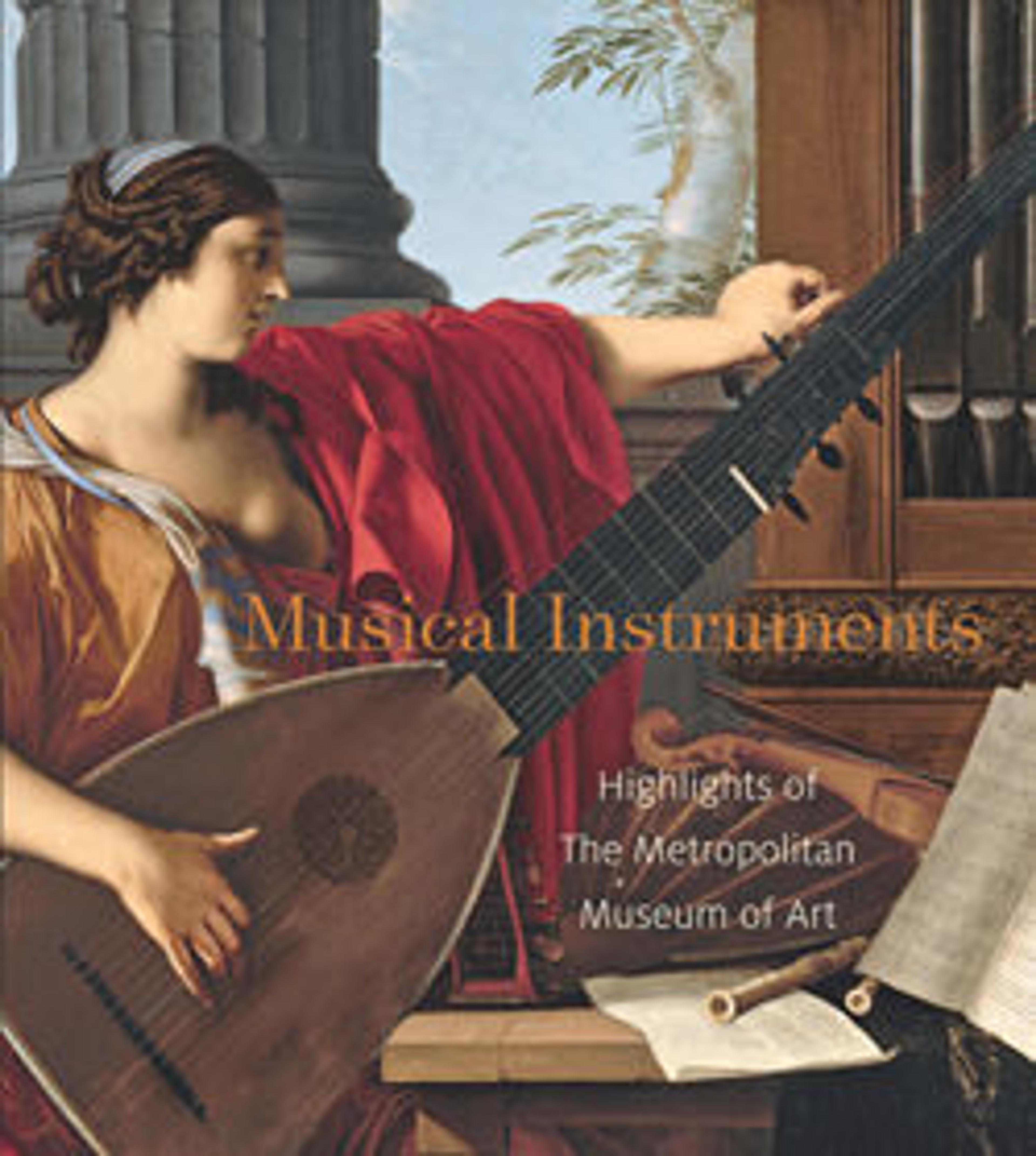Division Viol
Viols, the most esteemed bowed instruments of the late Renaissance, were only gradually displaced by the violin family. Viols differ from violins chiefly in shape, in number of strings and tuning, and in having fretted necks. All viols are played in an upright position between the knees or on the legs ("gamba" means "leg"), and the bow is held palm upward. The sound is less brilliant and quieter than that of the violin family of instruments. Chamber music for a consort of four to six viols was composed during the Renaissance and Baroque eras, and solo works for the bass viol were being played until nearly the end of the eighteenth century. This instrument is of the type known as a division viol, measuring between two and three inches shorter than a consort viol.
Although the instrument bears the label of the celebrated Richard Meares of St. Paul's Churchyard, London, which was renowned as a center for violin making, the label reveals only one part of a probable narrative that illustrates the intricacies of trade and succession in the musical instrument making business. Stylistic and structural features of this instrument such as its thin purfling and geometrically patterned ribs, suggest that it was most likely made in the workshop of Edward Lewis, who died before the instrument was completed. It is likely that Richard Meares II purchased the unfinished older instrument at a sale of Lewis's effects, completed it and marked it with his father's label. The outstanding workmanship of the viol and the richness of the decoration point to a well-to-do customer. The dating of the instrument has been determined from dendrochronology of the carved-out two-part belly, which established 1672 and 1673 as the youngest growth rings. The earliest possible manufacturing date of the instrument is about 1677. Despite the ambiguity surrounding its authorship, scholarship has demonstrated that it is an important example of early eighteenth-century English viol making.
Although the instrument bears the label of the celebrated Richard Meares of St. Paul's Churchyard, London, which was renowned as a center for violin making, the label reveals only one part of a probable narrative that illustrates the intricacies of trade and succession in the musical instrument making business. Stylistic and structural features of this instrument such as its thin purfling and geometrically patterned ribs, suggest that it was most likely made in the workshop of Edward Lewis, who died before the instrument was completed. It is likely that Richard Meares II purchased the unfinished older instrument at a sale of Lewis's effects, completed it and marked it with his father's label. The outstanding workmanship of the viol and the richness of the decoration point to a well-to-do customer. The dating of the instrument has been determined from dendrochronology of the carved-out two-part belly, which established 1672 and 1673 as the youngest growth rings. The earliest possible manufacturing date of the instrument is about 1677. Despite the ambiguity surrounding its authorship, scholarship has demonstrated that it is an important example of early eighteenth-century English viol making.
Artwork Details
- Title: Division Viol
- Maker: labeled Richard Meares (British, London 1647–1725 London)
- Date: ca. 1680
- Geography: London, England, United Kingdom
- Culture: British
- Medium: Spruce, ebony, maple
- Dimensions: Height: 46 1/16 in. (117 cm)
Width: 14 3/4 in. (37.4 cm)
Depth: 5 in. (12.7 cm)
Weight: under 40 lbs - Classification: Chordophone-Lute-bowed-fretted
- Credit Line: Purchase, Louis V. Bell Fund, Mrs. Vincent Astor Gift, and funds from various donors, 1982
- Object Number: 1982.324
- Curatorial Department: Musical Instruments
Audio
9309. Consort Meares Viola
0:00
0:00
We're sorry, the transcript for this audio track is not available at this time. Please email info@metmuseum.org to request a transcript for this track.
More Artwork
Research Resources
The Met provides unparalleled resources for research and welcomes an international community of students and scholars. The Met's Open Access API is where creators and researchers can connect to the The Met collection. Open Access data and public domain images are available for unrestricted commercial and noncommercial use without permission or fee.
To request images under copyright and other restrictions, please use this Image Request form.
Feedback
We continue to research and examine historical and cultural context for objects in The Met collection. If you have comments or questions about this object record, please complete and submit this form. The Museum looks forward to receiving your comments.
